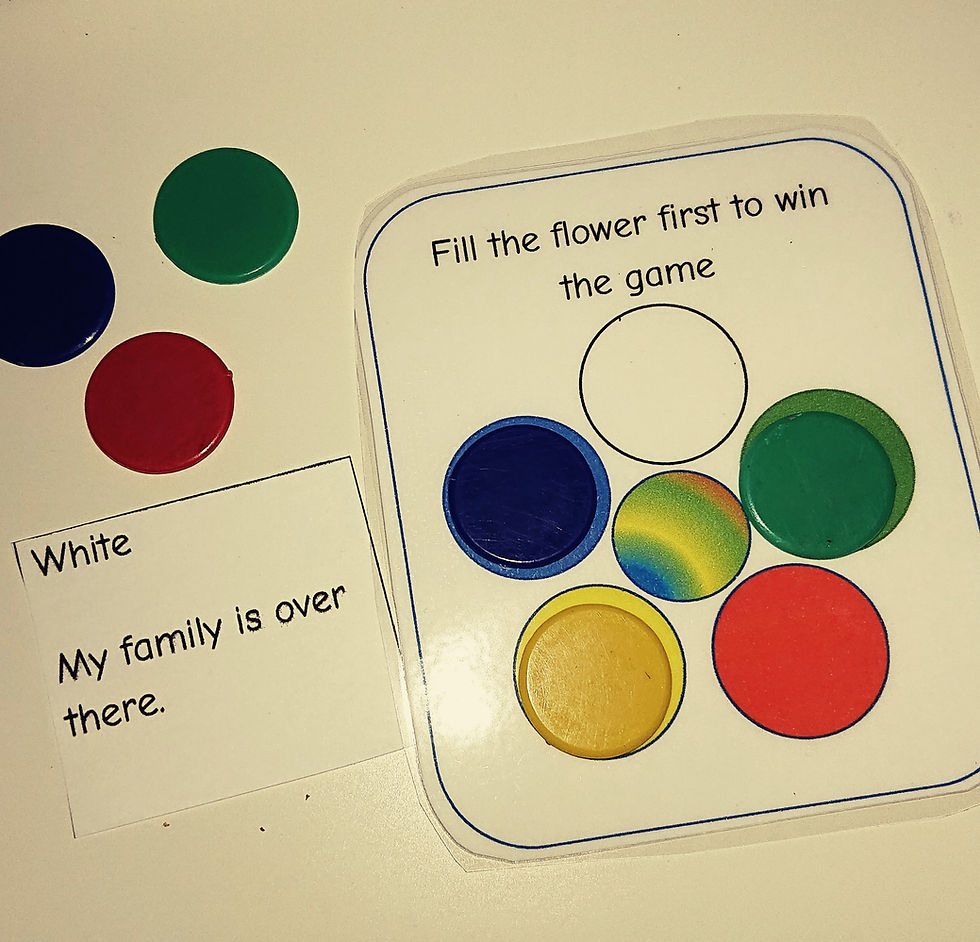Why I Love Go Fish
- Abigail

- Oct 8, 2020
- 2 min read
This engaging game is simple to make and can be used to practise a lot of skills. It’s great for reading, but it can also be used to find question and answer pairs. My pupils usually ask to play it again and again!
To create a game of Go Fish, grab some plain flashcards and write words/ facts to make pairs.
Shuffle, deal five cards each and then place the rest into a draw pile.
How to play:
Player 1 looks at their cards. Make any pairs you already have and set to the side.
Player 1 picks one of their words. Ask player 2 ‘Do you have …’
If player 2 has it, they hand it over and player 1 gets to ask again!
If player 2 does NOT have it, they say Go Fish, and player 1 picks up a card from the draw pile.
Swap Turns and repeat until all of the cards have been used. The player with the most pairs wins.
It’s great for word reading
It’s a matching pairs game, but children can’t simply look at two words to see if they match: they have to read the word in order to ask for it! For this reason, it practises reading skills more than a simple concentration game, where sometimes children can see that words look the same without actually reading them.
For high-frequency words, you could even put four or five words on each card, or short, simple sentences.
For homophones
Create homophone pairs. You can include sentences or pictures too, if you like. Twinkl has a great set!
This really makes children think, as they have a word (e.g. sea) and they have to work out what the other, unseen word is to ask for it. They would say ‘Do you have see as in I can see the moon.’
For sentence reading
Create a set of sentences with missing words, and a set of the words. If you have the word, ask ‘Do you have a sentence which would fit…’
If you have the sentence, read it and then ask ‘Do you have the word…’
For Times Tables
This game is amazing for learning inverse table facts. Create a set of cards: I recommend for one multiplication table only or it gets confusing. For example, on one card, write ‘6 x 4’ and on the other, ’24.’
Explain which multiplication table you are working on. If the child is just learning, try writing it out or skip counting it to ensure they can access the game and therefore practice.
The game is played as above, but if you have an answer, you have to ask for the question. So, if we were working on 4 x table and I had 16, I would ask ‘Do you have 4 x 4?’
If you have a question, then you have to ask for an answer. So if I had 5 x 4, I’d ask ‘Do you have 20?’
This game will work for most pairs concepts provided there is only one possible question for the given answer. You can also make picture-word pairs.







Comments